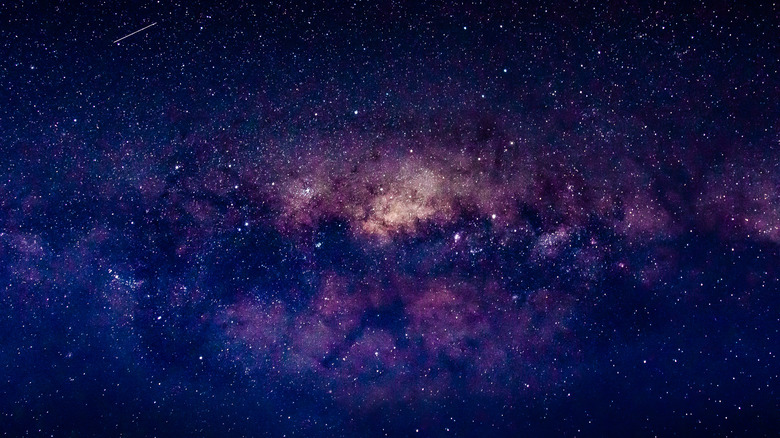The Stunning Number Of Stars In The Milky Way Galaxy
Over the centuries, humankind has gone from thinking that the Earth was the center of the universe with a dome of stars around it (via Britannica) to realizing that it revolved around our sun (per Universe Today) to recognizing that the sun was just one of many in a galaxy that we know of as the Milky Way (from the Library of Congress). Now we know that our home galaxy is one of many others that are sprawled throughout the universe. It also is home to many, many other stars besides the sun.
How many are there, though? Are there more grains of sand in a desert than there are stars in the Milky Way? The answer, while reaching numbers that are hard for our minds to comprehend, is still something that would qualify as "we're not entirely sure." There are a lot of factors that go into something like this, and there are also certain obstacles that bar us from getting a full accounting, for now at least. But it's fun for us to try to gauge it.
Counting grains of sand might be easier
We can't physically count the number of stars in the galaxy. So what can scientists do? They have the general idea of what our galaxy looks like — it's a spiral galaxy per LiveScience. If we took a spaceship straight out of the Milky Way and looked down, it would have four arms and a very bright center. But how can they calculate what is in those arms and other parts? Our telescopes can't discern different stars and the center is so bright — there's also a huge black hole in there somewhere — that it is impossible to tell.
So they worked on figuring out what the mass of the galaxy is, per Space.com. They did this by using spectroscopy to see which things are moving toward us, or blue-shifted. The technique is known as "long-slit spectroscopy," since it involves a really long slit and also a prism. The Hubble telescope would be great, since it orbits Earth and not subject to interference from the atmosphere. There is a waiting list, though, which limits time to look. They have an idea of what the mass is and how many stars. But there is still a lot of guess work and estimation.
Now for the quasi-answer. There can be anywhere from 100 billion stars to 400 billion stars in the Milky Way, depending on who you ask, via NASA. That is still an incredible amount. Even more staggering is that there are billions of galaxies in the universe. So, it definitely raises the question about other life out there, but that is something for another article.

